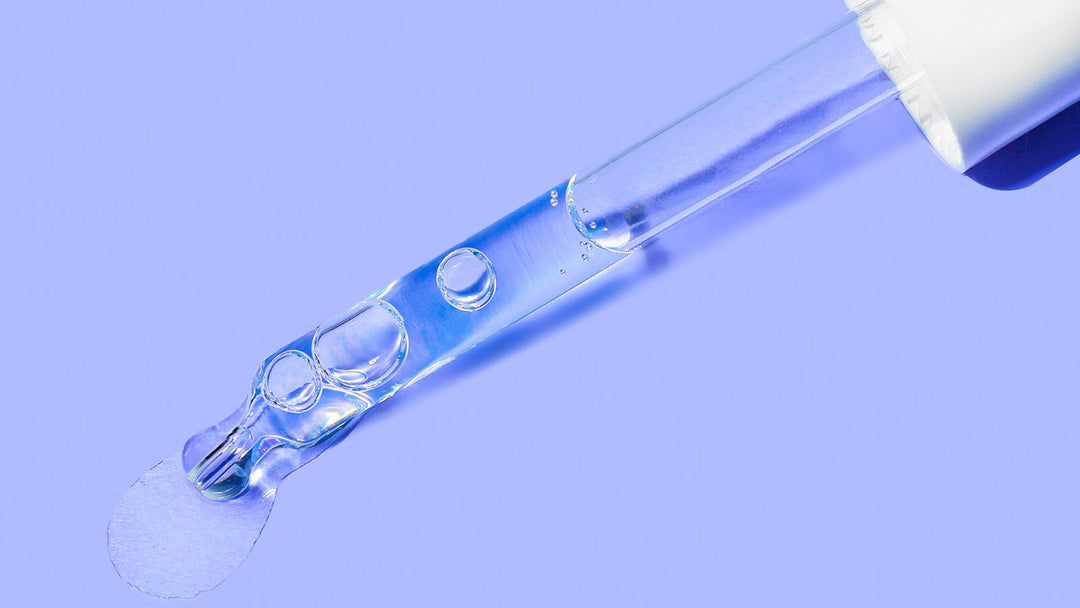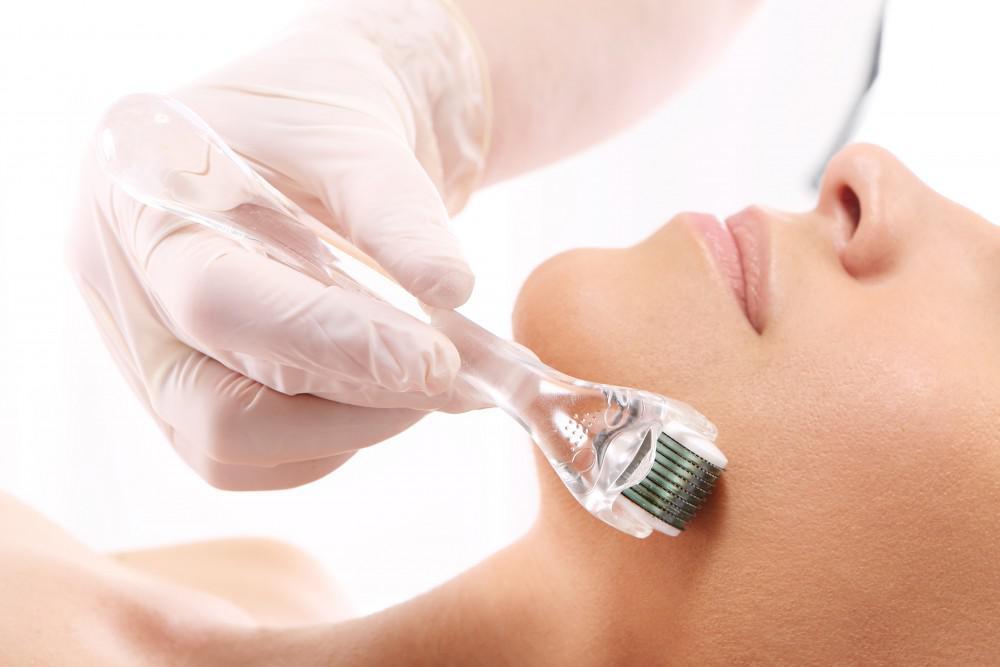Everything You Need to Know About Non Surgical Jawline Contouring
Whether you have a sagging jawline or a weak chin, jawline contouring can help change the shape of your jaw. Although surgery can be performed to address these issues, it can be expensive and take a long time to recover. If you are unhappy with the look of your jawline or chin, you may wish to add definition to these areas.
Genetics or aging can cause a soft-looking chin and jaw. Luckily, it is possible to add definition, symmetry, balance, or contour to the jaw area, especially in profile. Nowadays, many patients are seeking out non-invasive options such as dermal fillers.
In order to get the results you want without surgery, jawline contouring with dermal fillers may be the best option for you. In most cases, the procedure only takes a few minutes, and the recovery period is short.
Here's all the information you need about non surgical jawline contouring to help you feel and look your best every day.
What Are Jaw Fillers?

Injectable jaw fillers are gels that are injected into the skin. They offer more volume and stimulate the production of hyaluronic acid or collagen. As a result, this can reduce the appearance of sagging, baggy skin, as well as bone loss around the jaw.
A jaw filler can be used for a variety of purposes, including:
- Reduce age-related volume loss in the lower face
- Enhance the oval shape of your jawline
- Improve jowl appearance
- Enhance the jawline's sharpness
- balance an asymmetrical jawline
- Add chin strength or proportion
- Make the face look strong and framed
Non surgical jawline contouring is also referred to as jaw fillers. It is a minimally invasive procedure that should be performed by a licensed, experienced professional, such as:
- Plastic surgeon
- Dermatologist
- Nurse practitioner
- Physician's assistant
Injecting jaw fillers strategically along the mandible (lower jaw) creates a more defined jawline. Jaw fillers make you appear slimmer by sharpening the angle of your face. "It creates a subtle change that doesn't look overdone or excessive."
It is important to note that not all types have been approved by the Food and Drug Administration (FDA) for use in this area. Nevertheless, many doctors use fillers off-label for chin augmentation and jawline definition. Your doctor may use the following jaw fillers:
- hyaluronic acid (Restylane Lyft and Juvederm Voluma or Volux)
- calcium hydroxylapatite (CaHA) (Radiesse)
Your doctor may recommend several types of dermal fillers for the jaw and chin. However, as of now, there is only one FDA-approved filler for enhancing the jawline and chin: Juvederm Volux.
It's best to use thicker fillers for the chin and jawline, since they aren't malleable and stay in place. In most cases, jaw filler isn't enough to eliminate a double chin on its own. However, when combined with other procedures, such as Kybella, it may prove beneficial for this condition.
Jawline Contouring Cost
U.S. health insurance does not cover jaw filler when used solely for cosmetic purposes. The jawline contouring cost may vary depending on where you live and who prescribes the medicine.
Costs may also be affected by the type of filler recommended by your doctor. The average cost of fillers such as Restylane Lyft, Juviderm Volux, and Radiesse is between $600 and $800 per syringe. Costs may also be influenced by age. Patients with more bone and volume loss may need more syringes per session.
The body breaks down and metabolizes filler over time. You may need to return every 6 months or so for refresher injections. Depending on the amount of filler used, the price of these smaller amounts can be half or more of the total cost of your initial treatment.
How Long Do Jaw Contouring Fillers Last?

The results of jaw fillers are visible immediately. Although individual results vary, hyaluronic acid fillers can last up to two years for most users. The effects of calcium hydroxyapatite may last for up to 15 months.
You may start to see diminished results after 9 to 12 months, especially if you don't administer refresher injections consistently. In order to prolong the life of jaw filler, you can do the following:
- Wearing sunscreen to protect your skin from UV light
- Regularly moisturizing your skin
- Drinking plenty of water to keep your skin hydrated
- Maintaining a healthy diet
- Managing stress
Does Non Surgical Jawline Contouring Hurt?
The sensation of pain can be subjective, and some people may feel more discomfort than others after receiving jaw filler injections. In case you are anxious about the discomfort, speak to your doctor ahead of time.
Your practitioner may use a topical cream, local anesthetic, or other form of anesthesia to numb the area before injecting fillers. Injections of jaw fillers shouldn't hurt if you're working with an experienced injector. Each injection may cause a brief sensation of pressure or weirdness, but not much more.
Once the numbing cream wears off, you may feel some pain or discomfort at the injection sites. The symptoms should not last longer than a day. If you experience severe or lasting pain, you should contact your doctor immediately.
What’s the Contour Jawline Procedure Like?
Ask your doctor what to expect prior to and after jaw filler treatment during your initial consultation.
Before the Procedure
In general, here are the steps you should follow before getting jaw fillers:
- Inform your doctor about any medications you are currently taking.
- You should stop taking blood thinners, pain relievers, or supplements such as St. John's Wort, vitamin E, garlic, ginseng, and primrose oil.
- Before getting fillers, refrain from drinking alcohol for a couple of days.
- For several days before your appointment, stop using topical skin treatments containing glycolic acid, retinols, or retinoids.
- You should not use any hair removal products during this period, including tweezers.
- Since jaw filler is a nonsurgical procedure, you can drink and eat normally before the procedure.
During the Procedure
Make sure you arrive without makeup and in comfortable clothing for your jaw filler treatment. Here's what to expect during the short procedure:
- A local anesthetic is used by your medical provider to numb the injection site.
- As soon as the mandible is numb, a small amount of filler gel will be injected strategically in multiple sites. For easier placement of the filler, a cannula may be used.
- It is important for your doctor to go slowly during treatment and continually evaluate the results of each injection.
- It takes about 30 minutes to complete a jaw filler treatment.
After the Procedure
After getting jaw filler, you may experience some swelling or bruising. You may want to ask your doctor about using topical arnica to reduce bruising. If necessary, apply ice immediately following treatment and afterwards.
What Results to Expect from Jaw Fillers?

You should notice your results immediately, even if you have mild swelling. A jaw filler procedure should also allow you to resume your normal activities immediately afterwards.
Here are some tips for getting the best results:
- Don't use makeup or concealer to cover up redness after the treatment.
- Do not exercise strenuously.
- Avoid drinking alcohol.
- Don't spend too much time in the sun.
Possible Side Effects From Jaw Contouring Fillers
The following are common side effects of jaw fillers:
- Temporary discomfort
- Bruising
- swelling
- itching
- acne eruptions
Side effects that are less common include:
- infection
- skin nodule formation
- inflammatory skin reaction (granulomas)
- skin lumps
Severe complications are rare with dermal fillers. To prevent serious complications from accidental injections into facial nerves or arteries, you should only work with an experienced professional.
There are a number of severe complications that can occur, including:
- dead tissue caused by blood flow blockage
- asymmetry
- scarring
- blood vessel injury
Jaw Filler Alternatives
Not everyone is a good candidate for non surgical jawline contouring. Depending on your desired outcome, you may want to consider the following options:
- Diet and exercise. Anyone who wishes to have a pronounced jawline can benefit from exercises designed to tighten it. Overweight people may also benefit from adjusting their diet if they have a double chin.
- A Botox injection. As an alternative to jaw fillers, Botox may be used to slim down the jaw or reduce its appearance. TMJ (temporomandibular joint disorders) can also be alleviated by this technique.
- Coolsculpting or Kybella. The purpose of these products is to eliminate the fat pad under the chin that causes the appearance of a double chin. Fat cells are frozen and killed by Coolsculpting. Fat cells are dissolved by Kybella.
- Jaw surgery. If you want a more permanent result, you may want to consider jawline surgery. Even though jaw surgery is highly effective, it can cost as much as tens of thousands of dollars and may not be covered by insurance.
How Are Jawline Fillers Also Called?
There are many types of dermal fillers and jawline fillers are one of them. Skin is referred to as the dermis, which is where the name "dermal" comes from. In addition, you may hear the following terms:
- Facial fillers
- Injectable fillers
- Soft tissue fillers
Who Can Get Contour Jawline Fillers?
There are different parts of the body and face where dermal fillers can be injected. There are more than 3 million Americans who get some type of dermal filler every year.
There are several reasons why you may want a jawline filler:
- Make your jawline look fuller.
- Separate your jawline from your neck by creating a more defined line.
- Sharpen the angle of your jawline.
- Appear younger.
- Improve the symmetry of your jawline.
- Improve the appearance of wrinkles and sagging skin by reducing the effects of aging.
- Ensure your jaw is free of creases and fine lines.
Who Shouldn’t Get Jawline Fillers?
If you have any of the following conditions, you shouldn't get dermal fillers:
- Cold sores (herpes simplex virus type 1)
- Connective tissue diseases like lupus or scleroderma
- An infection
- Uncontrolled diabetes
Who Performs Jawline Filler Procedures?
Jawline fillers can be injected by various types of healthcare providers. It is important to find a licensed provider who has experience with dermal fillers. Just type 'jawline contouring near me' on Google and you should be able to find a reliable provider.
Jawline filler procedures can be performed by the following providers:
- Dermatologists
- Cosmetic or plastic surgeons
- Physicians, physician assistants and nurse practitioners
When Should I Call the Doctor?
If you experience any of the following symptoms, contact your healthcare provider:
- Itchy rash caused by an allergic reaction
- More than a week's worth of bleeding, redness, or swelling
- Bumps or nodules near the injection site
- Having an asymmetrical (lopsided) appearance for over a week
- Symptoms of infection, such as fever
In Conclusion
By using jaw fillers, you can safely change the look of your jawline, chin, and entire face for a certain period of time. The technique is typically used to get subtle results.
It is important to note, however, that even a small change to your jaw definition or chin volume can have significant effects on your overall facial appearance. Schedule a consultation with a licensed, experienced practitioner to discuss your goals for this procedure.




